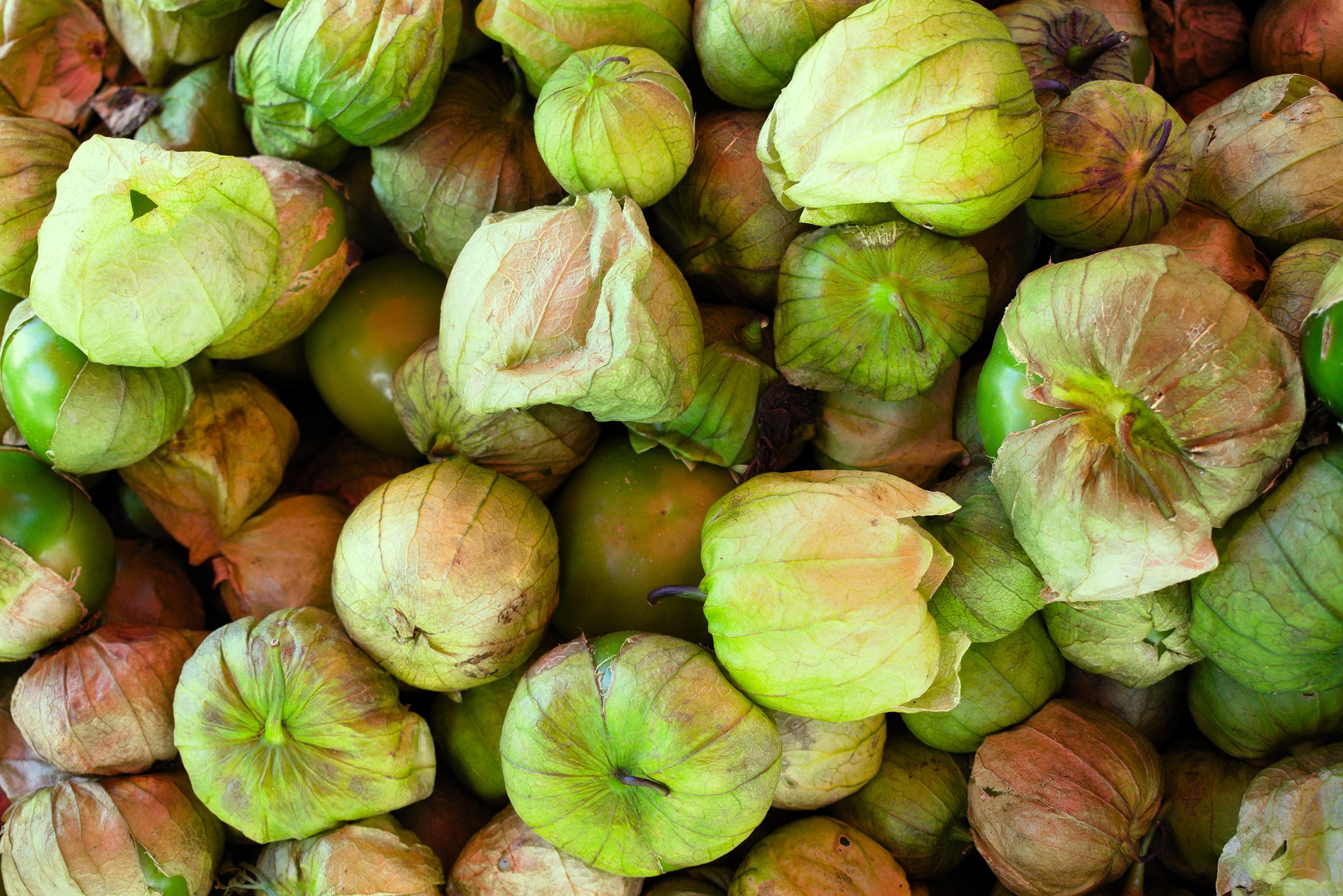
Planting, Growing, and Harvesting Tomatillos
The Almanac Garden Planner - Use It Free for 7 Days!
Plan your 2025 garden with our award-winning Garden Planner.
Types
- Tomatillo ‘Purple’ grows vividly purple fruit sweeter than most green varieties. It is a favorite for eating fresh off the vine. The more sunshine, the ‘purpler’ the fruit.
- Tomatillo ‘Verde’ is an early maturing variety and a favorite for use in salsa. It can grow quite large, so a tomato cage or other support is helpful.
- Tomatillo ‘Tamayo’ is a tall hybrid plant that sets large, 2.5-3 inch diameter fruits.
Cooking Notes
With tomatillos, the fruit inside the papery husk is eaten. The leaves, husk, and stem are toxic and shouldn’t be eaten. Before eating the fruit, be sure to scrub the fruit clean of any sticky husk residue. Do not remove the green peeling.
They can be eaten raw or cooked, though many people find the flavor too sour and pungent to eat raw. If you boil them for about 8 minutes in water, they’ll become more tender and lemony tart. Blend to make salsa verde or slice to add to recipes.
Tomatillos Salsa
For an easy salsa, chop up tomatillos (remove the stem part), and add to a skillet with sautéed garlic and onion. Cook tomatillos for about 6 to 8 minutes, until tender and slightly browned. That’s it! We love salsa with tortillas, tacos, fish, chicken, beans, and cheese.
ADVERTISEMENT
I have grown fruit with just 1 plant for years. I have never needed a 2nd to pollinate. So don’t fret if you only have 1!
In the 1960's my Dad grew a plant very similar that I believe he called a "husk tomato" though I'm not sure if I'm remembering that correctly. The fruit only grew to the size of a large gooseberry, about an inch across or less, was sweet with a golden yellow color and a tan husk when ripe. Does anyone have any idea what that could have been? I've never seen it anywhere before or since my Dad grew it.
You may be referring to a ground cherry. I find them at the farmer's markets in the Portland, OR area and have had some luck growing them at home. They are a tomatillo, but have a totally different flavor. Look for varietals called Aunt Molly's or Pineapple. I like both of them. Here is a link to some seed: https://territorialseed.com/collections/open-pollinated-heirloom-ground-cherry?gclid=CjwKCAiAmJGgBhAZEiwA1JZolrTPWelJBzzqsJFjgTiOQiX45rf_GQyOTJjzF9RoPYMCM1sn5jjZ2xoC_GsQAvD_BwE
I too have a single tomatillo plant that I got from a local nursery last year at the end of the season. It was not in good shape then, so only got a few fruits (I actually only got one!). It reseeded and is doing quite well, producing nicely. It's an Aunt Molly heirloom. It ripens to yellow and tastes mildly sweet.
Thank you Pamela! You're absolutely right. I just looked them up. I'll try some this year. Thanks again.
Mexican folks roast the Tomatillo on a fire-grill; they use this to make the Salsa with very hot peppers; which are also grill-roasted; 'too hot for me"!~













